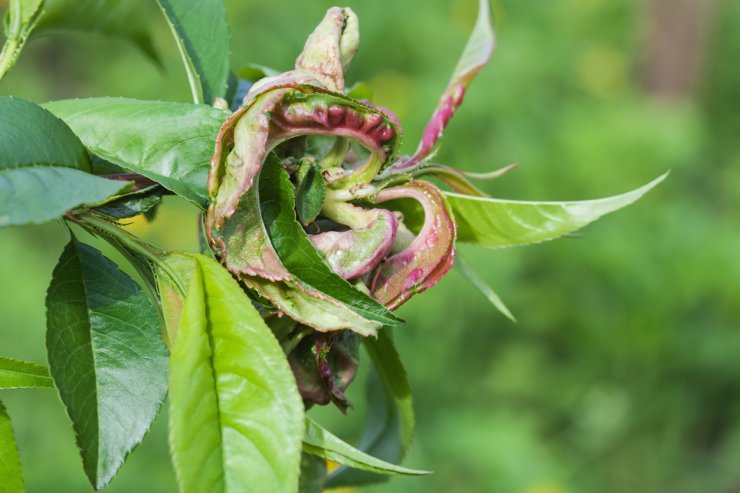
Peach tree with leaf curl.
Above all, peach trees need to be monitored for pests and diseases. Here are some of the things you need to keep an eye out for throughout your tree’s life.
Diseases
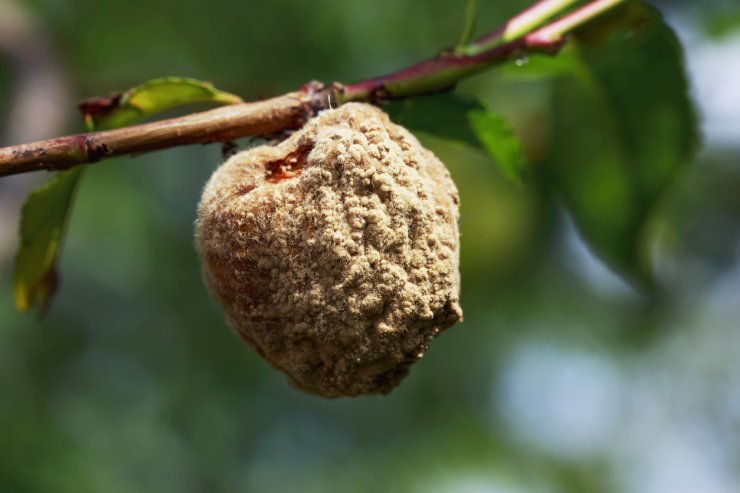
Brown rot affecting peach.
Brown rot is a fungal disease that can devastate stone crop fruits such as nectarines, peaches, cherries, and plums. The first symptoms of the disease are often seen in spring with dying blossoms that turn to mush and form a grayish fuzzy spore mass on the branch. Eventually the disease attacks twigs and fruit, too.
Remove anything that’s been affected from the tree immediately. Prevention of brown rot includes proper pruning to allow air to flow around the branches, as well as insecticide treatments to prevent insects from creating wounds where the disease can flourish.
You can also prevent brown rot with an all-purpose fruit tree fungicide, treating regularly and as directed. Start fungicide treatment in the early spring before flower buds appear and reapply the fungicide every two to three weeks until the peach tree’s blossoms have faded. Resume applying fungicide when the fruit starts to get their first blush of color, which should be two to three weeks before you plan on harvesting.
As with any fungal disease, if your tree becomes infected, remove all infected matter immediately and throw it in the trash or burn—don’t put it into a compost pile!
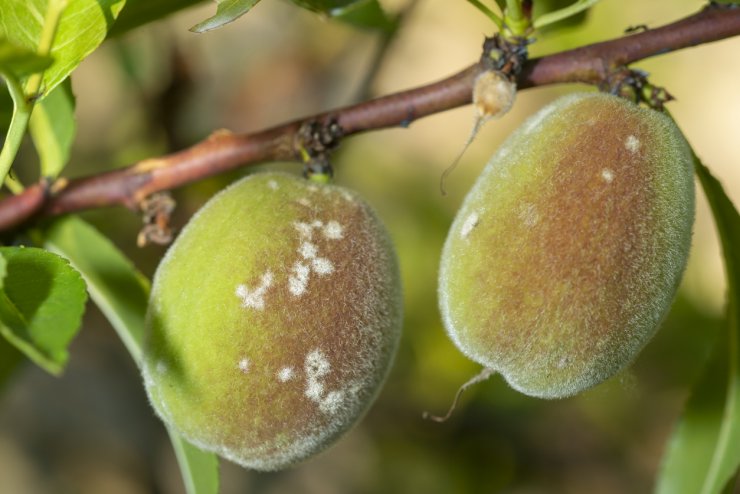
Powdery mildew on young peaches.
Powdery mildew is a powdery white fungus that shows up on your tree as a common problem. Powdery mildew, traveling with the wind to your plants, can slow down the growth of your tree and, if the infection is severe enough, will reduce fruit yield and quality. It comes from nearby weeds or old vegetative matter, so keep a clean garden to help prevent the disease.
Again, prevention is the best treatment. Sunlight and low humidity are the disease’s enemies, and your careful pruning will increase sunlight and air circulation around branches.
And that all-purpose fungicide will come in handy for this problem, too. Some gardeners swear by neem oil or a lime-sulfur spray for pretty much every fungal disease.
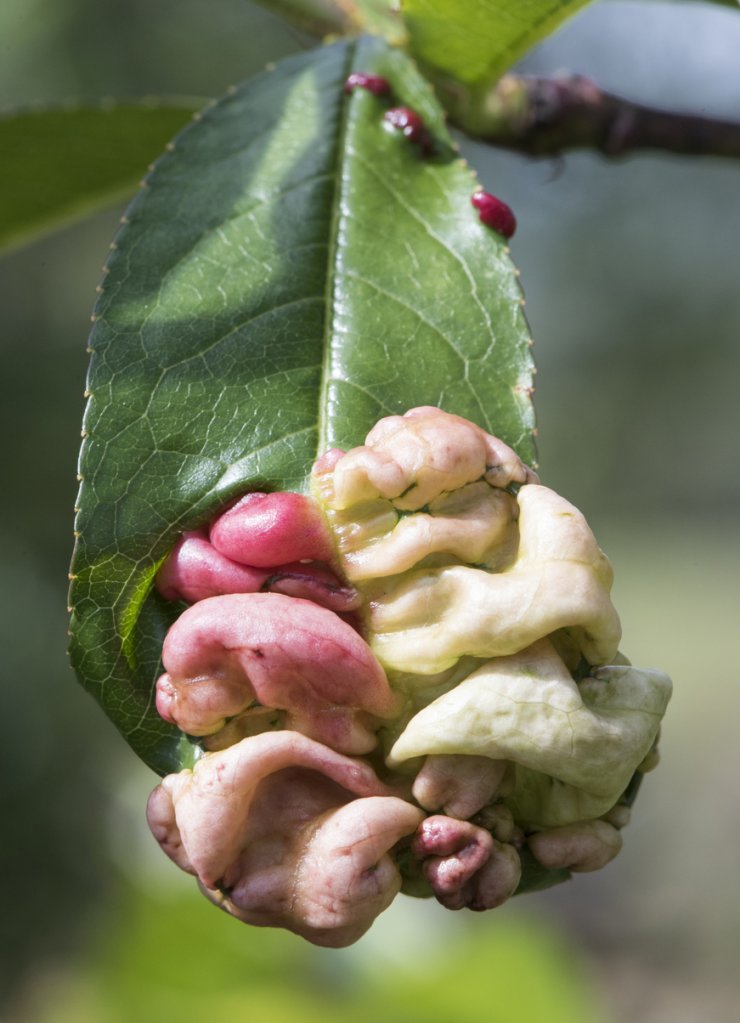
Leaf curl in young peach tree.
Leaf curl is a disease to which most cultivars of peaches are resistant, but you may still have to deal with it in young trees. It usually doesn’t directly affect the fruit, but does reduce the crop yield by partially defoliating the tree.
As always, the best offense is a good defense, so maintain a clean garden and use a lime-sulfur spray, neem oil, or other all-purpose fungicide. Always follow the directions on the product label to get the timing right.
Also consider placing a plastic cover over trees to keep the rain off buds and flowers between early winter and late spring, to reduce the risk of peach leaf curl.
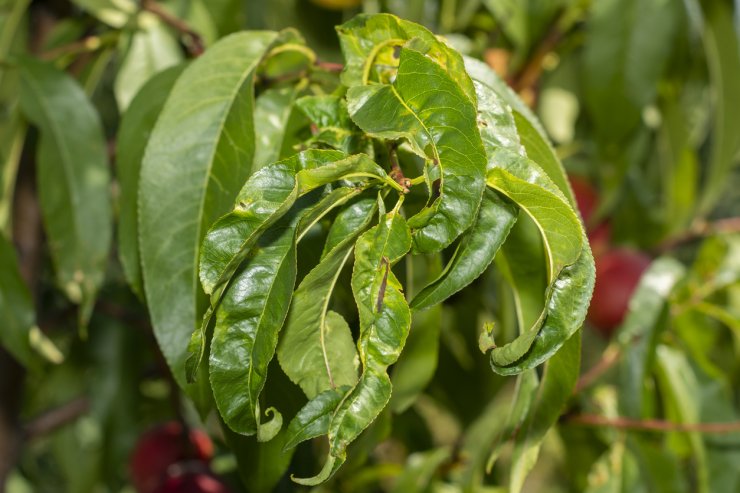
A peach tree with wavy leaves and color mottling characteristic of mosaic viruses.
Mosaic viruses are characterized by leaves that are mottled with yellow, white, and light or dark green spots and streaks (in other words, a “mosaic” of these colors). Plants are often stunted, or they grow poorly. Plants may have other deformities and their leaves may be crinkled or wavy.
Once plants are infected, there is no cure for mosaic viruses. Because of this, once again—you guessed it—prevention is key! Keep insects off your tree, because they spread the fungus. Control weeds, as they serve as hosts for the disease.
If your tree does show signs of a mosaic virus, again, remove affected matter and destroy it or throw it in the trash.
-
- Tip: Always disinfect your gardening tools, especially your pruner, after every use to prevent the spread of any fungal diseases. Keep a bottle of weak bleach solution handy to wipe down your tools.
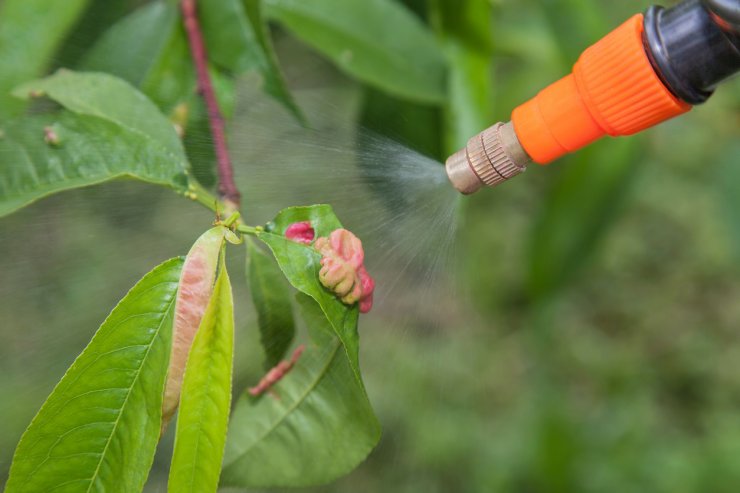
Spraying a sick peach tree with a fungicide.
An alternative to chemical fungicides
Try spraying your plants with a sodium bicarbonate solution: Mix 1 teaspoon baking soda in 1 quart of water. Spray plants thoroughly, as the solution will only kill fungus that it comes into contact with.
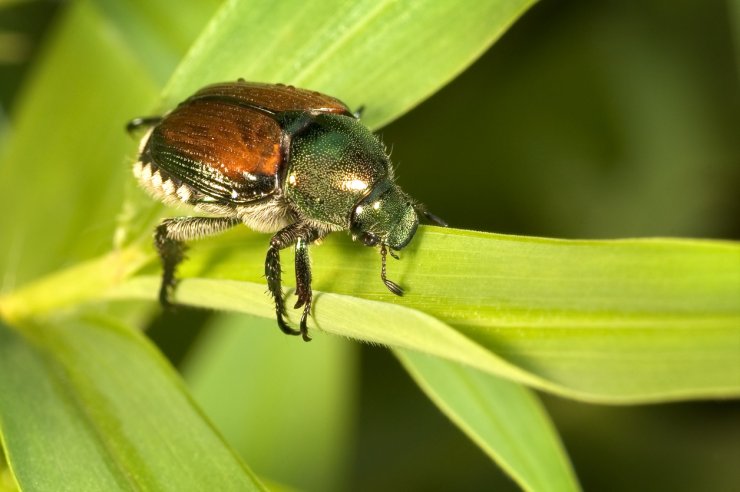
Japanese Beetle on leaf.
Pests
There are a number of insect enemies to your peach tree, which should be combatted with neem oil and sprays containing potassium bicarbonate. Pick off the offenders you can see and spray for the rest, following directions on the label. Common pests include borers, aphids, and leaf hoppers.
One pest that deserves special mention is the Japanese beetle which, though short-lived, can do a lot of damage in that time, especially as they usually attack plants in groups.
Japanese beetles can devour most of the foliage on favored plants, as well as the flowers. Look for leaves that are “skeletonized,” with only veins remaining.
Hand-picking is an effective method of control, but if that’s just not doable, stick with the sprays mentioned above. (Note: Neem oil can be harmful to aquatic life, so limit its use near bodies of water.)
You can also shake off the beetles onto a drop-cloth in the early morning when they’re most active. Always drown beetles in soapy water. Another alternative is Japanese beetle traps, which can be effective but can also attract beetles into your garden. Place them far away from your peach tree so you don’t exacerbate the problem instead of solving it.
An organic prevention method is planting geraniums near your peach tree. Japanese beetles love geraniums and are affected by chemicals in the plant, which causes them to fall to the ground where you can sweep them up and dispose of them.
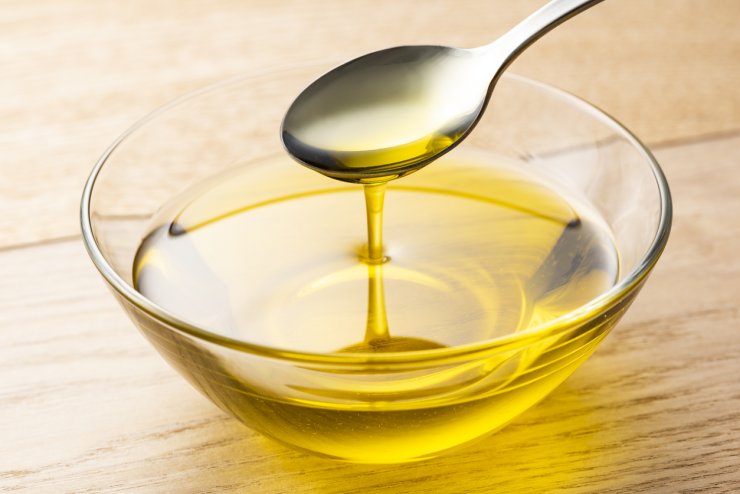
An alternative to chemical pest sprays.
An alternative to chemical pest sprays
Try a homemade solution: Mix 1 teaspoon of liquid dishwashing detergent with 1 cup of vegetable oil and shake well; then add it to 1 quart of water. Add 1 cup of rubbing alcohol and shake vigorously to emulsify. Pour this mixture into a spray bottle and check a small part of your tree to make sure it doesn’t harm the leaves, as homemade sprays occasionally do. Once you’re sure you’re safe, spray in the morning (never at temperatures above 90 degrees F) at 10-day intervals on pests.
Have you had problems with diseases attacking your peach trees? Have your peaches suffered brown rot or leaf curl? Do you use any organic treatments to keep diseases and pests away? Please tell us how you treat and prevent diseases from destroying your peach crop.


 Previous
Previous


my peach tree was so full of lovely peaches this year but the neighborhood squirrels just ravaged my tree leaving only the ones on the ends that they can’t reach. How do I keep these pests from eating all of my peaches?
Dawn,
What a sad, but all too common story. If you’re looking for a non-lethal option, here are a few you might try.
– spray the area with predator urine – you will need to do this every few days, especially after it rains
– tie reflective tape, mylar balloons or shiny pinwheels to the branches
– get a realistic-looking rubber snake and place it at the base of the tree – move it around every day
Good luck with your battle – let us know how it turns out